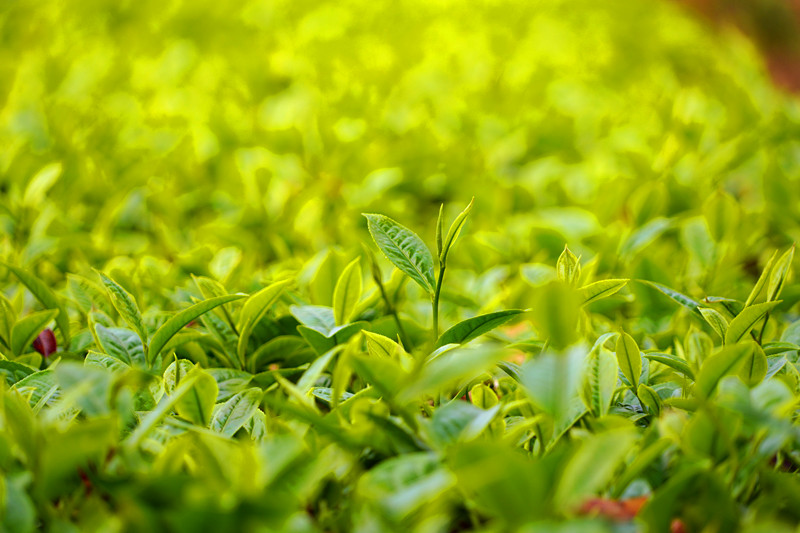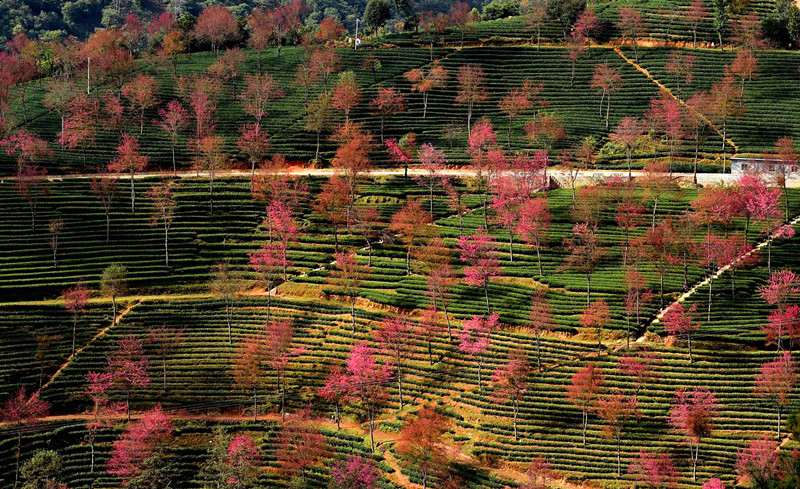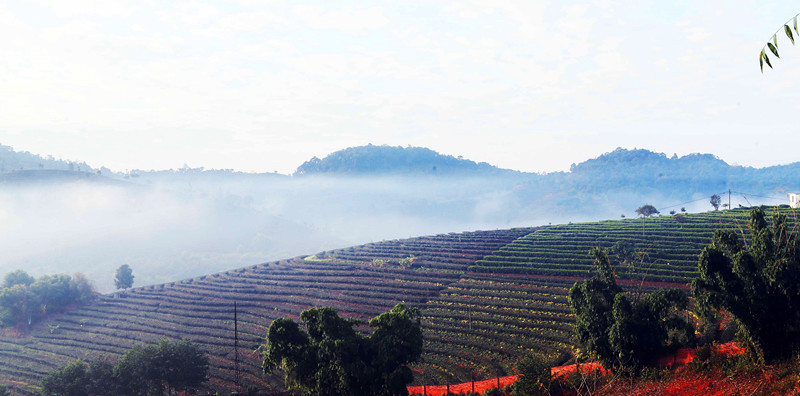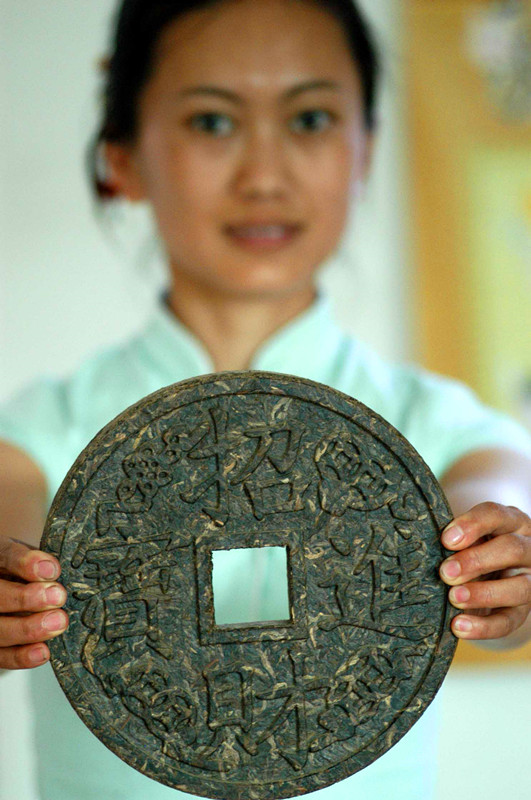
For centuries, tea from the East has kept enchanting the Western world as a mysterious and delicate drink. Some even praise it as the “Green Gold”.
It is now widely acknowledged that tea was originated around southwest China, notably today’s Yunnan. And a cup of warm tea with slight herbal fragrance has always been the first, and perhaps the best thing that a host can ever serve his guests upon their arrival. A tea-drinking culture, without any doubt, is embedded in the everyday life and memory of all residents who live on this land. Strolling Among Tea Gardens Etymologically speaking, the Chinese character for tea – comprising three radicals which represent grass, human, and wood, respectively – has remained the same written form for over a millennium since the Tang Dynasty (618-907 AD). Yet the way to pronounce it varied from one place to another, due to the huge and sometimes radical differences among regional dialects in China. And this is still the case. That’s why tea is called “chai” in today’s Russian and Hindu, being brought directly from Mandarin’s “cha”, while in English, French, Spanish and Italian-speaking countries, a sound resembling the “te” in Hokkien, a common dialect of Fujian province, has been shared, as these countries came to know about this beverage from the tea growers and merchants there in the first place. 

The distribution of tea plants in Yunnan is pretty wide. Wild tea trees have been found in 12 out of 16 prefectures of it in all. And production areas are scattered across the province, from Pu’er and Xishuangbanna down the south to Honghe and Wenshan along the southeast border, and then to Lincang, Dehong, Baoshan and Dali, sitting on its west side.
According to statistics from 2014, Yunnan now owns over 3,000,000 mu (appriximatley 200,000 hectares) of old tea plantations. The Mengku Tea Garden in Shuangjiang, Lincang – which recently has been selected as a candidate by the Ministry of Agriculture and Rural Affairs of China to vie for the GIAHS (Globally Important Agricultural Heritage Systems) of the United Nation – certainly proves Yunnan’s distinctive nature for tea cultivation. 
It’s worth noting that Yunnan is the home of some of the oldest tea plants on the planet. The 800-year-old “king tea tree” in Menghai, Xishuangbanna, and an even elder on which is believed to have erected in Zhenyuan of Pu’er county for as long as 2,700 years, have together witnessed the unbelievable natural and cultural history of tea in its birthplace.
Recently, a number of ecological tea gardens have mushroomed around Yunnan, in which tea trees are inter-planted with a range of other crops, including soybeans, peanuts, potatoes as well as oriental cherries. Aesthetics is apparently not the main reason for doing this. In fact, interplant can help ward off pests and diseases effectively. The Birth of Pu’er A good cup of tea is determined by several factors. And the primary one must be the natural-climatic conditions of the place where tea garden locates. The warm, humid and foggy areas of southern Yunnan provide a decent environment for the growth of tea trees. Some amazing chemistry done by the nature has been detected, which gives a particular taste and aroma to the teas being grown here. Pu’er is the best example of this. 
Pu’er tea, as one of the few fermented black teas that can be found in China, is an exclusive product of Yunnan. It can be roughly divided into two categories: the raw Pu’er and the ripe one. While raw Pu’er is marked by its strong flavor with some bitterness, the latter would rather offer a much milder and smoother taste. The process of making the tea involves several steps, including pan-frying (with an aim to suddenly stop enzyme activities and oxidation), leaf rolling, sun drying, fermenting as well as compressing.
Compression was a useful practice to help facilitate the transportation of tea in ancient time, but now it’s more like a type of packaging and representation. Cubed, round and pie-shaped Pu’er tea products can all be encountered in tea shops easily. And similar to red wine, they can normally be stored for many years before taking out for enjoying. 
In the history, teas of Yunnan might not be as popular as those from other provinces, like Fujian and Zhejiang, but after several years of endeavor, they have been successfully transformed into one of the most reputable products on both domestic and international markets.
Yunnan’s area of tea growing reached 6,200,000 mu (equivalent to around 413,300 hectares) in 2017. And a total production of 380,000 tons was achieved, ranking the second nationwide, just behind Fujian. |











7740f3b5-9ecb-438e-9052-76cb2d4bb671.jpg)

